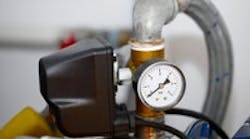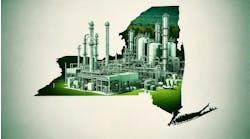Special Report: Compressed Air
Chemical manufacturers today are looking at all aspects of their business to conserve energy and decrease costs. Compressed air is often over looked in these efforts as many people do not fully understand compressed air equipment, their own system, or what it costs to produce compressed air power. In this Special Report, we review compressed air and provide insights on how to understand equipment and identify potential areas for savings.
Download the special report now.
Different types of air compressors exist, but reciprocating and screw type compressors are the most commonly used (see: “
Choose the Right Air Compressor”). In large plants, such as petrochemical and petroleum refineries, centrifugal air compressors are common. The types and sizes of air compressors affect the operating efficiency and smoothness of the resulting air flow. Whatever air compressor is used, the inlet air conditioning is very important for operational efficiency. The inlet air should be filtered, free from dust and as cool as possible. In some cases, modifying the duct to make air intake to the compressor cooler can improve the compressor’s volumetric efficiency and save energy cost. The same is true for inter-coolers used in multi-stage air compressors. In the southern part of the United States, extending the air inlet duct for air compressors from just outside the utility building helps significantly. Most air compressors include loading and unloading features. When the air system pressure reaches the high setpoint, one (or more) of the operating compressors closes the inlet damper and runs as unloaded. This helps reduce the compressor’s power consumption. When the air system pressure drops to the low setpoint, the inlet damper opens and the compressor runs again as loaded. Periodically monitoring the compressor runtime at loaded and unloaded settings is important to maintain compressed-air-system efficiency. If the compressor(s) suddenly started running continuously on loaded condition, you should explore the system for any rise in usage level. If there’s no genuine load increase, initiate an air system leakage survey immediately. Similarly, if any compressors run on unloaded condition for longer durations, then it’s best to stop one of them. When large centrifugal air compressors are in service, they generally use surge control. You should critically analyze compressors running with too much surge volume to improve the overall compressed air system’s operating efficiency. In some plants, fitting air compressor motors with variable frequency drives to adjust the motor speed can reduce energy costs significantly.Compressed air stored in receiver tanks allows the compressor to operate intermittently while the air is used continuously. Compressors and receivers must be optimally sized and located so air is supplied to all pneumatic loads at adequate pressure all the time, while minimizing the compressor’s energy use. In one process plant, adding two suitably sized receivers near the user locations eliminated the need for a new air compressor. Make sure to sensitize staff to air costs to avoid abuse of compressed air for personal and space cleaning. Air dryers supply moisture-free air to critical instruments and pneumatic controllers; so, carefully analyze their operating efficiency. Chilled and desiccant-type dryers are commonly used in plants. Some air dryers may have substantial air volume loss in separating the moisture out of air. When the electrical cost is high and the required dew point of air is critical, changing to a different type of air dryer may be worth consideration. A compressed-air distribution system comprises piping, fittings, valves and regulators that control, condition and distribute air where needed. The large number of connections and joints involved in air system assembly is a major source of leaks and wastage in the system. Organize leak surveys frequently and fix any leaks promptly to keep compressed air costs under control. Regular monitoring of leak levels is essential for utility cost control. Conduct leak tests by monitoring the loading and unloading times of air compressors when the process doesn’t consume compressed air. In a batch processing plant, our leak test identified one air compressor running continuously and another that was loaded half of its running time when there was no genuine compressed air usage. Fixing the air leaks alone paid back the cost of the energy audit in just three months.




